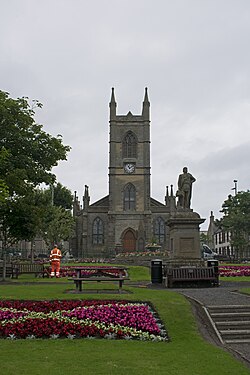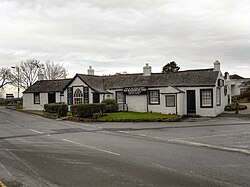
The first marriage records for Scotland can be found in Old Parochial Registers (OPRs) which also contain details of baptisms and burials. From 1754, in England a couple under the age of 21 could only marry with parental consent. The law did not change in Scotland which led to an increase in those travelling to the Scottish borders to marry[1]. Scottish civil registration was introduced in 1855 meaning you can find official marriage certificates from this date.
Research your ancestors on MyHeritage
Research your ancestors on MyHeritage
Old parochial registers (OPRs)Old parochial registers (OPRs)
Old parochial registers (OPRs) are similar to the parish registers of England and Wales. They record the baptisms, marriages and burials of this within the region. They are however harder to find than English registers. Many do not begin until the 18th century and some do not survive at all. Marriages in particular were often not recorded and where they are they are sometimes not in chronological order.
Marriage records in OPRs are usually basic recording the date of the event and the name of the bride and groom. Witnesses names may also be given. Nonconformist marriages are not included in OPRs and will be found in their own separate chapel records where they survive.
Clandestine marriages in ScotlandClandestine marriages in Scotland

In England, irregular marriages were outlawed by Hardwicke's Act which came into effect from 1754. This meant that a marriage could only take place in an Anglican church performed by an Anglican minister amongst other strict rules. In order to marry, such as without the need for parental consent, many couples from England and Wales travelled over the Scottish border to wed. You may therefore discover non-Scottish ancestors marrying in Scotland for this reason. This marriages usually occurred close to the border of England and Wales with Gretna Green being the best known example.
Civil registrationCivil registration
Statutory registration was introduced in Scotland in 1855. The details supplied on a marriage certificate are as follows:
- Date of marriage
- Place of marriage
- Full names of the bride and groom
- Ages of the bride and groom (sometimes written only as 'full age' if they were aged 21 or over)
- Bride and groom’s marital status (i.e. single, widowed, divorced)
- Occupation of the bride and groom
- Residence of the bride and groom (may be a street address or the name of a parish)
- Bride and groom's fathers' names and their occupations
- Name and maiden surname of the mothers' of the bride and groom
- Whether the couple married by banns or licence
- The name of the person who performed the ceremony
- The signature or mark of the bride and groom (a mark is usually shown as an 'X')
- The signatures of two witnesses (these may or may not be relatives of the married couple)
In 1855 the following additional information was also recorded:
- Birthplace and when and where registered
- Number of former marriages of the bride and groom
- Number of children by the former marriages
Where to find the recordsWhere to find the records
Most OPRs can be viewed online at Scotland's People. Some transcripts are also available to view online such as the Scotland, Marriages, 1561-1910 collection at MyHeritage. Scottish marriage certificates can be ordered online for a fee from Scotlands People.
See alsoSee also
Explore more about marriage records in ScotlandExplore more about marriage records in Scotland
- Scotland, Marriages, 1561-1910 record collection at MyHeritage
- Scotland, Selected Banns & Marriages, c. 1650 - c. 1855 record collection at MyHeritage
- Online Sources for Scottish Genealogy Research at Legacy Family Tree Webinars
- Foundations of Scottish Genealogy 4 of 12: Using ScotlandsPeople for pre-1855 Old Parish Record at Legacy Family Tree Webinars
References
- ↑ Gretna Green. Historic UK. Retrieved 5th November 2024

